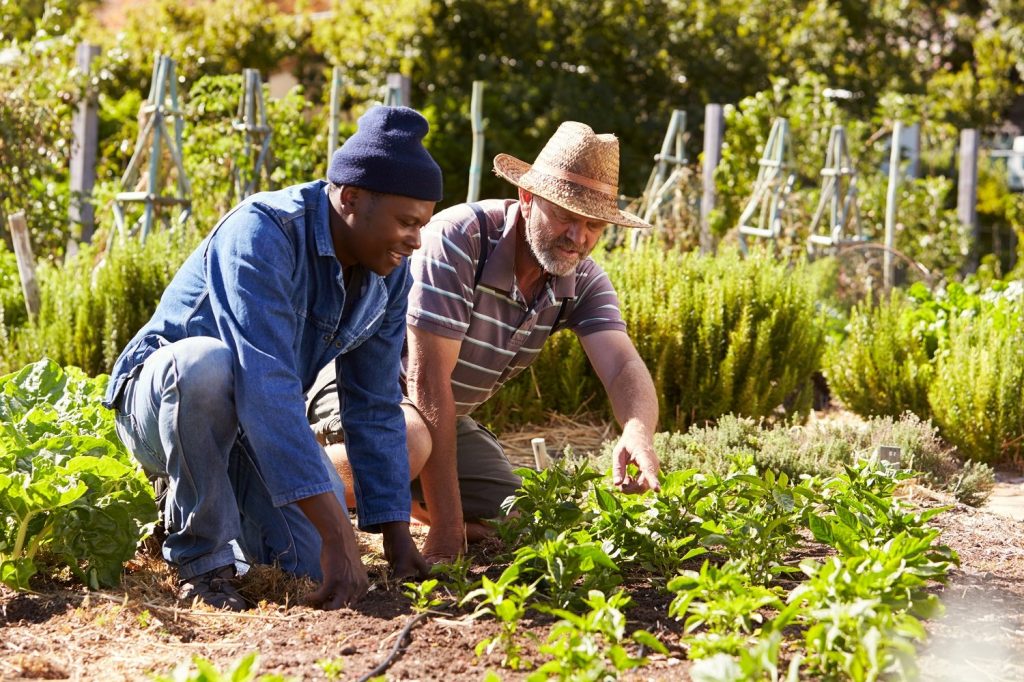
13 December 2021

This article was guest written for Ending Loneliness Together by Professor Ben Smith, Professor of Public Health (Prevention and Health Promotion) at the The University of Sydney’s School of Public Health, and Member of Ending Loneliness Together’s Scientific Advisory Committee.
There are encouraging signs that public awareness about loneliness, and the profound consequences this experience can have, is growing. In part, this has been driven by the expanding research that is showing that loneliness is an issue that causes significant health and social outcomes, that has not received a policy response commensurate with its impact. It is also clear that the collective experience of lockdowns during COVID-19 has shone a light on the effects of being deprived of social connection, generating media coverage and giving licence to more openness about loneliness and isolation. A feature of this discussion has been reflections on the qualities of communities; whether there is sufficient social connectivity within neighbourhoods to prevent loneliness; and, what the practical possibilities are for reaching out and supporting those who are vulnerable.

“Communities serve an important function of offering safe and supportive environments for all, where social connection is openly promoted, and loneliness is not a hidden, taboo issue.”
Local communities certainly have a vital role to play in reducing the emergence and impact of loneliness, and efforts at this level can be strengthened by recognition of those who may be particularly at risk. Longitudinal data collected in the Household Income and Labour Dynamics in Australia (HILDA) survey, which includes over 17,000 people, sheds some light on population sub-groups who are most likely to report loneliness. This shows that levels of loneliness are highest among those who are living alone or are single parents, people born in non-English speaking countries, the unemployed, persons living in areas of most socioeconomic disadvantage, and those who have long-term health conditions. These data draw attention to the fact that within communities there are people who will need additional support to overcome barriers to social connection and inclusion.
This attention to the vulnerable needs to be balanced with an understanding that loneliness affects a broad range of people at different stages of life, and is generated by a multitude of factors. Communities serve an important function of offering safe and supportive environments for all, where social connection is openly promoted, and loneliness is not a hidden, taboo issue. Turning again to data from the HILDA study, examination of the experiences of survey participants over sequential years revealed that higher levels of interaction with neighbours, friends and family, and expressing feelings of community trust, are predictors of not developing loneliness. This indicates that an important part of our response to loneliness is raising public awareness about this issue, highlighting that the incidental and ongoing interactions between neighbours and community members have important consequences for social and mental well-being.

“While there is still limited evidence about the types of strategies that are effective in reducing loneliness, it has been consistently found that providing opportunities for engagement in meaningful, rewarding activities in a group environment is beneficial.”
Organisations and groups which operate at the grassroots level in communities – including neighbourhood centres, civic groups, faith-based organisations, sporting clubs, community health centres, and others – can make valuable contributions by offering opportunities for social connection and building the capacities of community members to engage those who are at risk of loneliness. While there is still limited evidence about the types of strategies that are effective in reducing loneliness, it has been consistently found that providing opportunities for engagement in meaningful, rewarding activities in a group environment is beneficial. The possibilities here are many and diverse, and might include community gardening, land care groups, walking and cycling groups, community choirs, mens’ sheds, book clubs, adult learning classes, dancing groups, surf lifesaving clubs, volunteering opportunities in community services … the list goes on!
However, it should be recognised that having a local presence, and even an espoused commitment to welcoming new members, does not mean that community organisations or groups will make a meaningful contribution towards reducing loneliness. Leaders and members of these entities require a values base, along with knowledge and skills, to successfully reach and engage community members, particularly those who have been living with loneliness and lack social confidence.

Research conducted within the Victorian Active Ageing Partnership (VAAP), a major initiative of the Victorian Government to promote involvement of socially isolated and disadvantaged older people in group-based physical activities, identified the skills and practices that community organisations require for successful inclusion of participants with diverse backgrounds and needs. One of these was an ability to use multiple promotional channels to create awareness of programs and activities. Word-of-mouth was consistently identified as a particularly important method of reaching new participants, and this requires staff, volunteers, and current members to contribute to awareness raising efforts through their various networks.
The VAAP research also found that early experiences of group involvement have a major impact on whether new attendees settle in and feel comfortable to continue. Receiving a warm welcome when first attending, and help with registration and collecting information about the program, can reduce uncertainly and embarrassment. A number of programs assign a buddy to new members, to assist them to navigate this process and facilitate introductions to other participants. Over the longer term, participation can be sustained by continuing to pay attention to the social integration of group members, checking in on them when they don’t attend. Also valuable is creating opportunities for participants to have input into the selection and planning of group activities, and to take on roles as volunteers to support program delivery.
“Local councils, community health services, and neighbourhood houses and centres, are organisations that will often have the position, profile and expertise to play this role.”
Much of the meaningful work to foster social connections and tackle loneliness is going to need to take place at the community level. Leadership will be essential in these efforts, and local councils, community health services, and neighbourhood houses and centres, are organisations that will often have the position, profile and expertise to play this role. In certain contexts seniors organisations, multicultural services, Aboriginal community organisations, or others, will be best placed to instigate and coordinate action. Given that addressing loneliness will entail whole of community strategies as well as interventions tailored to the needs of different vulnerable groups, the development of partnerships involving multiple and diverse organisations will be required to plan, evaluate and sustain this work.

With thanks to Professor Ben Smith for this article. You can learn more about Professor Smith’s profile and work here.